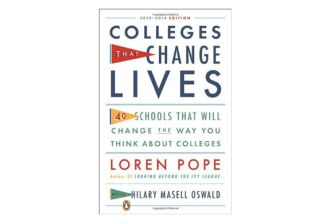About St. John’s
St. John’s distinctive liberal arts curriculum and educational practices have long given it a highly respected place among American colleges and universities. Its strong commitment to collaborative inquiry and to the study of original texts makes St. John’s College a particularly vibrant community of learning. Through close engagement with the works of some of the world’s greatest writers and thinkers—from Homer, Plato, and Euclid to Nietzsche, Einstein, and Woolf—undergraduate and graduate students at St. John’s College grapple with fundamental questions that confront us as human beings. As they participate in lively discussions and throw themselves into the activity of translating, writing, demonstrating, conducting experiments, and analyzing musical compositions, St. John’s students learn to speak articulately, read attentively, reason effectively, and think creatively.
St. John’s College is proud to be included in Colleges That Change Lives, a book written by Loren Pope and first published in 1996. The list of 40 schools features distinct institutions of higher learning that offer an alternative to traditional university education.


